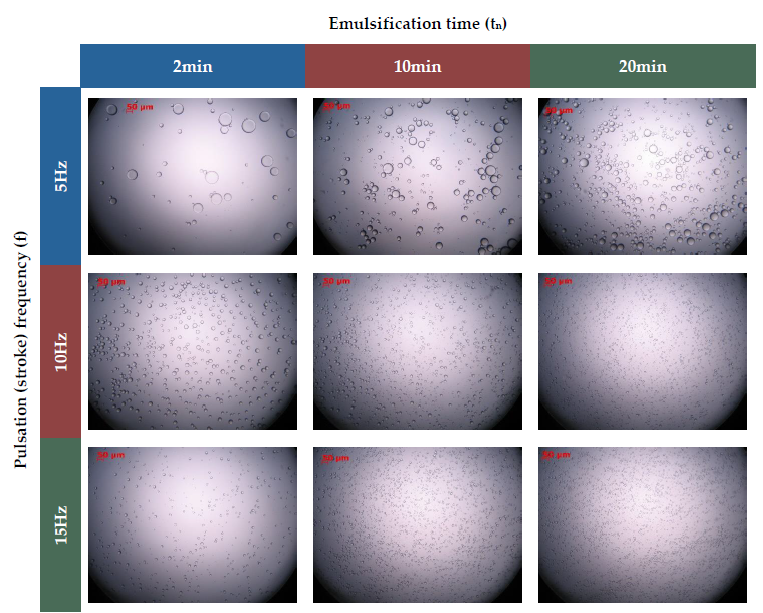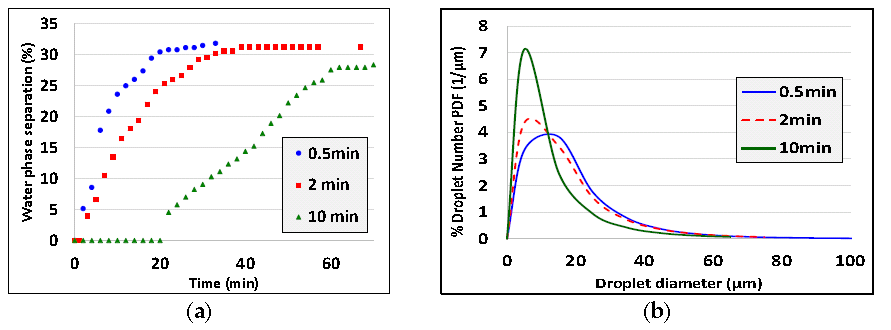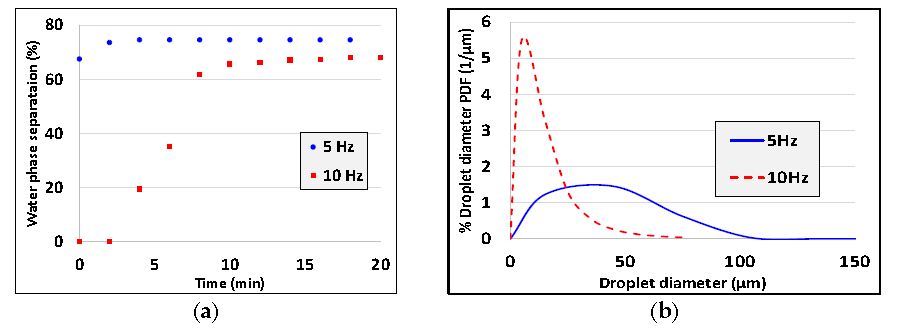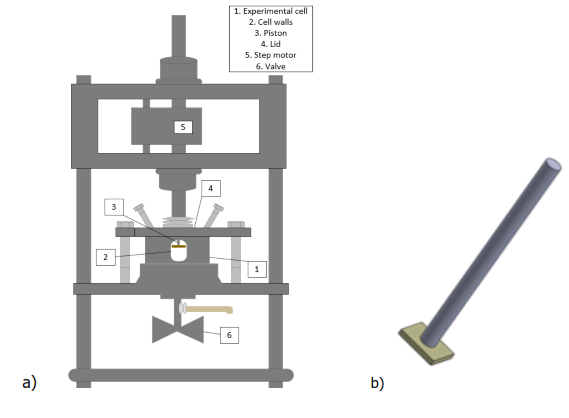Contant Persons: A. Chondrou [aggeliki1811@gmail.com]
Video: Monitoring of droplets breakup during emulsification with Photron FASTCAM Multi high speed camera
This project aims to the design and construction of an innovative miniature emulsification device similar to FOAM – C cell, a device used for space experiments in the ISS. The emulsification cell is rectangular with its main body made of aluminum whereas the cell walls are made of glass offering four ports, one at each side, for optical recordings and lighting. Almost the entire cross-section of the cell is scavenged by a thin aluminum plate fixed at the tip of a piston that moves up and down in the cell at controlled frequency and duration (Fig 1).
The main working materials for the preparation of oil in water emulsions in small volumes (3.4) are Millipore water and Dodecane. The main surfactant which is used is Sodium Dodecyl Sulfate (SDS), the Critical Micellar Concentration of which is 2.5 g/L. Paraffin oil is also examined as oil phase for the preparation of emulsions with the surfactant Ethylan 1008 as emulsifier. Two methods are used for the evaluation of emulsions’ stability: 1) phases’ separation (oil/water/emulsion) by computing the creaming index vs time from photographs taken with the Camera Canon EOS – 350D at different time intervals for several hours/days, and 2) droplet size distribution at the end of emulsification by analysis of microscopy images. Typical images processed to estimate droplet size probability density functions and average diameters appear in Fig 2.

Fig. 2: Indicative droplet images at different emulsification times and pulsation stroke frequencies
During experiments the examined emulsification parameters are the following: a) Concentration of surfactant, 2) Emulsification duration, 3) Pulsation stroke frequency, d) Oil to water ratio, e) Shape of piston plate (Fig 3) and f) Width/height of gap between piston plate and cell walls.

Fig. 3: Schematic representation of a) Piston 1 (non-uniform plate height and b) Piston 2 (uniform plate height)
The obtained results are summarized below:
- The water phase separation occurs slower with smaller droplet size. In addition, droplet size decreases when the interfacial tension of oil-water system and oil volume fraction reduces, as well as with the increase of emulsification time and stroke frequency.
- The piston of orthogonal-shaped sides and uniform plate height shows higher emulsification effectiveness.
- The piston with the largest gap width exhibits an inferior performance while the one with the highest gap width and height seems to produce slightly smaller droplets.
Indicative results are presented in Fig 4-7

Fig 4. Effect of surfactant concentration CSDS on a) water phase separation and b) droplet size distribution of emulsions

Fig 5. Effect of nominal emulsification time tn on a) water phase separation and b) droplet size distribution of emulsions

Figure 6. Effect of stroke frequency f on a) water phase separation and b) droplet size distribution of emulsions

Figure 7. Effect of oil to water ratio φ on a) water phase separation and b) droplet size distribution of emulsions
